- Introduction.
- Long-term trends in Japan’s total population
- Not long ago, the argument was “population growth = root of all evil”.
- Inverse correlation between urbanization rate and fertility rate!
- Urban or rural?
- Is Korea the destination of unipolar concentration?
- Based on the constructal law?
- Are we just watching the process of reaching a demographic equilibrium point?
Introduction.
The book is quite voluminous and discusses how a sustainable Japan in 2050, assuming a declining population, can be achieved from various aspects, including demographic history, finances, fertility, community, and healthcare.
Based on this book, I would like to describe the urbanization rate and the fertility rate.
Long-term trends in Japan’s total population
The long-term trend of Japan’s total population is shown in the figure below.
It should be noted that the total population was maintained at 30 million for about 200 years during the Edo period. Since the Meiji Restoration, the 20th century has been a period of population growth, but in 2005, for the first time, the population declined from the previous year.
The population continued to rise and fall over the next few years, but since 2011, the society has been in full population decline, which continues to this day.

Not long ago, the argument was “population growth = root of all evil”.
The debate on population (though not limited to population) is an interesting one, and while the pessimistic argument that population decline is the root of all evil nowadays dominates most discussions, the first half of the 20th century through the postwar period was a time of population growth, when the argument was quite the opposite: population growth was the root of all evil.
In order to cope with the rapid increase in population after the Meiji Restoration, the Taisho period recommended “birth control,” arguing that women would always be too busy raising children to advance in society because children would be born one after another.
The GHQ, which had jurisdiction over Japan after the defeat in World War II, also saw the increase in the Japanese population as a problem and encouraged the use of contraceptives and the spread of correct sexual knowledge in order to deter population growth. The argument was that Japan, with few natural resources and insufficient arable land, would be plagued with food problems if population growth continued at such a rate.
This is not limited to Japan; for a long time, China also encouraged a one-child policy for nearly 40 years, from 1979 to 2014, but now the situation has changed and the country is suffering from a declining population problem with an unstoppable decline in the birthrate.
Inverse correlation between urbanization rate and fertility rate!
The era of rapid population growth just described proceeded in parallel with the era when everything flowed toward Tokyo.
Here are the total fertility rates by prefecture (2024).
There are considerable regional differences within the country, with Okinawa having the highest at 1.6 and Tokyo (0.99) having the lowest. However, both have declined compared to 2018 (Okinawa: 1.89 to 1.6; Tokyo: 1.2 to 0.99). Tokyo was the first in the nation to fall below 1 in 2024.

The total fertility rate in 2024 was 1.20, the lowest on record, and the number of marriages was the lowest at 470,000
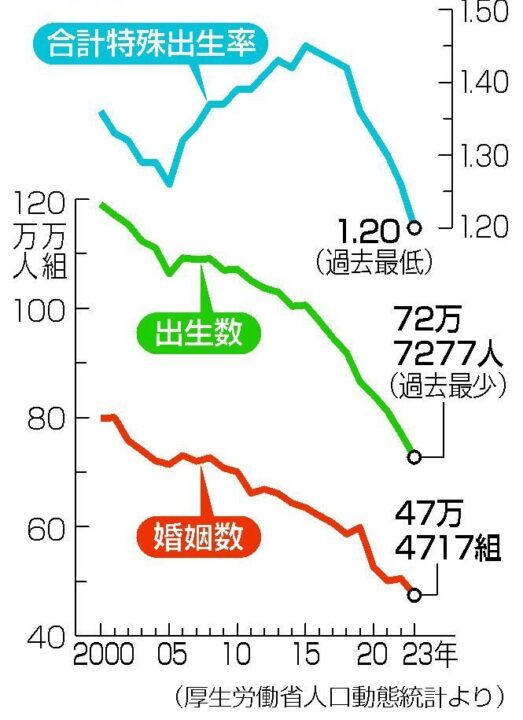
Simply put, the more the population concentrates in Tokyo, the lower Japan’s overall birth rate will be, and the more the population will decline.
Designing a Society with a Declining Population” Yoshinori Hiroi (Author)
The economy is concentrated in Tokyo, so everyone comes to Tokyo, but the cost of living is also high, so the number of people who have many children will be economically limited.
Urban or rural?
The author discusses the future of Japan in terms of whether there is an urban concentration, rural decentralization, or a third way. The following disadvantages of urban concentration are listed.
Although the term “catastrophic scenario” is a strong expression, its main purpose is to describe a complex series of events, including the above points, such as fiscal collapse, accelerated population decline (← lower birth rate ← impoverished youth), widening inequality and poverty, rising unemployment (including AI replacement), hollowing out and shuttering of local cities, expansion of refugees from shopping, hollowing out of agriculture, and so on. The following series of events will occur in a complex manner.
The younger generation’s orientation toward locality and region has been increasing in recent years, but it remains only an “orientation,” and the number of people actually making I-turns and U-turns is not increasing. On the contrary, the number of people moving into Tokyo continues to increase.
According to the Population Movement Report for 2023 released by the Ministry of Internal Affairs and Communications on March 30, Tokyo had 68,285 “in-migrants,” meaning that the number of in-migrants exceeded the number of out-migrants. Although the number of excess transfers decreased in 2008 and 2009, the concentration of the population in Tokyo has accelerated once again.
Tokyo’s excess of moving in, up 80% in 23 years, 68,000 people, population outflow 40 prefectures.
Is Korea the destination of unipolar concentration?
It would be nice if we could shift from a concentration in Tokyo to a decentralization of the regions, but in reality it is unlikely to be that easy.
Mr. Ataka advocated a shift to rural decentralization with the exquisite keyword of “open sparsity” in the With Corona era.
However, in reality, now that the corona has dawned, there has not been that much decentralization. Rather, it is going backwards. What will be the destination of this concentration in Tokyo?
South Korea is a precedent.
The Impact of South Korea’s “Total Fertility Rate of 0.7
Japan currently has a fertility rate of 1.2-1.3, which is low enough, but the lowest in the world is South Korea, where the figure is a whopping 0.72, well below 1.
Incidentally, the problem of declining birth rates is not only a problem in Japan, but in many countries around the world. Even in the United States, which accepts many immigrants, the birth rate has dropped to 1.5. Scandinavia is also experiencing a similarly rapid decline.
The following response, shown by Professor Emerita Joanne Williams of the University of California, USA, upon hearing about Korea’s total fertility rate, became a meme on the Internet.
I’ve never heard of a birth rate this low. Wow, the Republic of Korea has totally failed.”
“Korea’s so screwed…Wow!”
In South Korea, a new “Ministry of Fertility Control” has even been established.

Korea’s metropolitan area concentration rate exceeds 50%.
As detailed in the article below, South Korea’s metropolitan area has 50.7% of the total registered resident population, and the birth rates of South Korea’s four largest cities are 0.55 in Seoul, 0.66 in Busan, 0.69 in Incheon, and 0.70 in Daegu, which are in the bottom one to four places. Tokyo’s birth rate is 1.04, which is about half the rate of Tokyo.

Young people who flocked to the metropolitan area in search of good quality jobs would most likely have given up marriage and childbearing to survive the fierce competition.
South Korea’s Fertility Rate at 0.72, Record Low for Eight Consecutive Years -Accurate Understanding of Young People’s Attitudes and Implementation of Effective Measures
The population rate of the Tokyo metropolitan area in Japan is currently about 30%. Although the population of the Tokyo metropolitan area is slightly increasing or remaining flat, the population rate of the Tokyo metropolitan area is rising relative to the rest of Japan, since the rural areas are losing about one city’s worth of population per year.
Even if it does not yet reach Korea’s 50%, if this trend continues, it will eventually exceed 50%. And by that time, the birth rate could be as low as 0.7.
Incidentally, here is the birth rate projection for 2024, and it is surprising that Southeast Asia (Thailand, Singapore, Hong Kong, Taiwan, etc.) are all below 1. Northern Europe is also down to about 1.5.
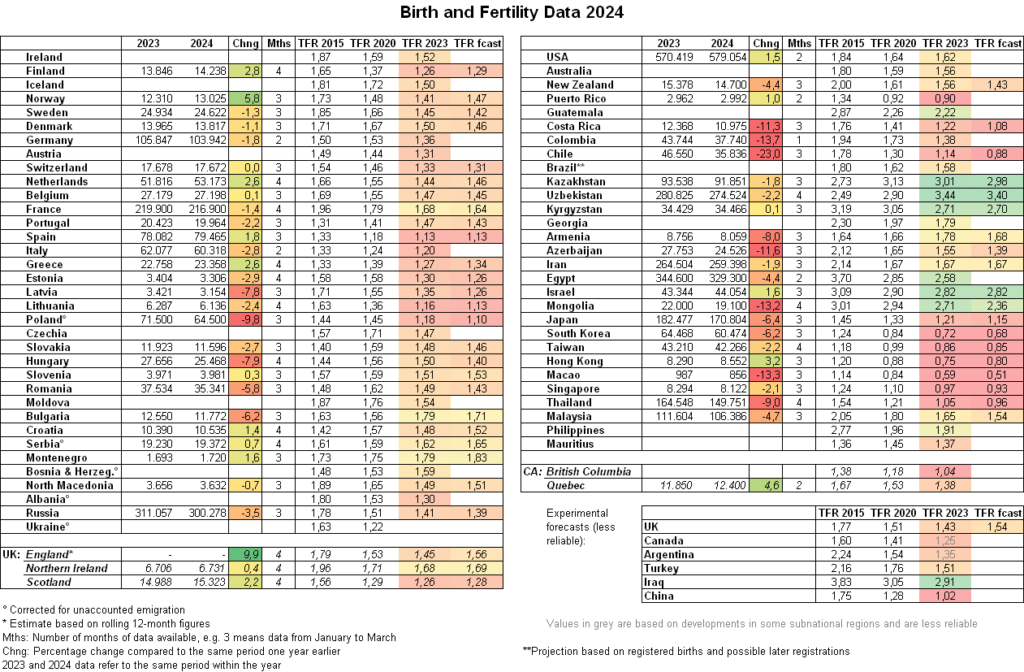
Based on the constructal law?
While we are on the subject, there is a constructal law that says, “If there is a flow and a free area, it will evolve to move faster and more smoothly.
From the viewpoint of efficiency of information penetration, the idea is that huge hierarchical organizations will inevitably emerge. Although it is unclear whether the rate of urbanization is subject to the constructal law, the concentration of people, goods, money, and information in large cities is inevitable from the perspective of information efficiency, and consciously encouraging local dispersion as a matter of policy would be an act of going against the flow of the many, and would require considerable effort or would be difficult to sustain. It may be difficult to sustain.
It is unclear what kind of steady state the urbanization rate will eventually settle into, and what factors will define it (topography or economic disparity?), but I suspect that eventually the urbanization rate will also settle into a steady state in terms of efficiency of information penetration.
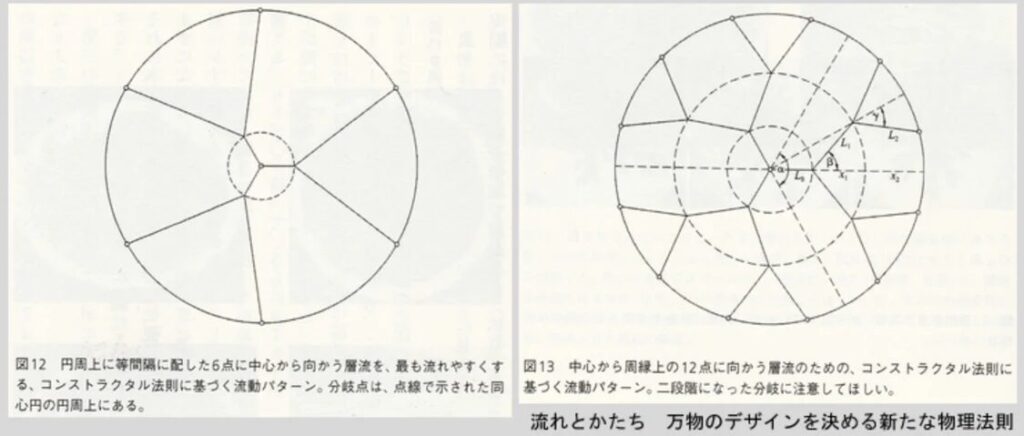
Are we just watching the process of reaching a demographic equilibrium point?
At the beginning of this report, we included a graph of the long-term trend of Japan’s total population, which shows that over the long years, population growth since the Meiji Restoration itself has been an abnormal trend.
I have not studied in detail the structure of the population steady state during the Edo period.
If the steady state continued with high fertility and high death rate, then the subsequent period from the Meiji Restoration until the end of the 20th century was characterized by high fertility and low death rate, resulting in an abnormal population growth, and the phenomenon we are currently facing after 2000 is small fertility and high death rate. Finally, we may settle into a steady state of low birthrate and low deathrate.

There is no way to know what the steady-state population is, but considering that the population is currently declining by about 800,000-1,000,000 each year, we may reach a steady state in 50 years at 70 million, or in 100 years at 30 million, and so on. The rapid population growth since the Meiji Restoration is being replaced by a population decline at about the same rate, and we may just be watching the process of finally reaching the original equilibrium point of about 30 million people in the Edo period.

Or, theoretically, if the total fertility rate is less than 2.1, the population decline is inevitable in that country alone and may disappear without ever reaching an equilibrium point.
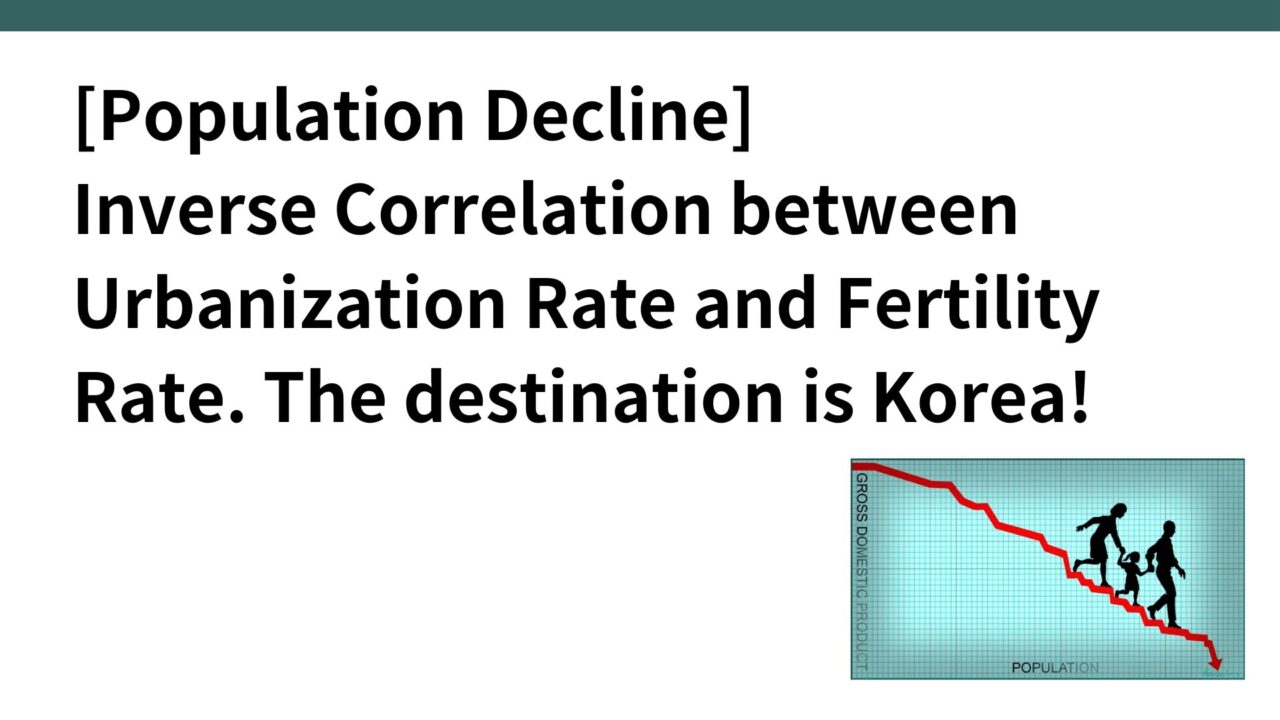


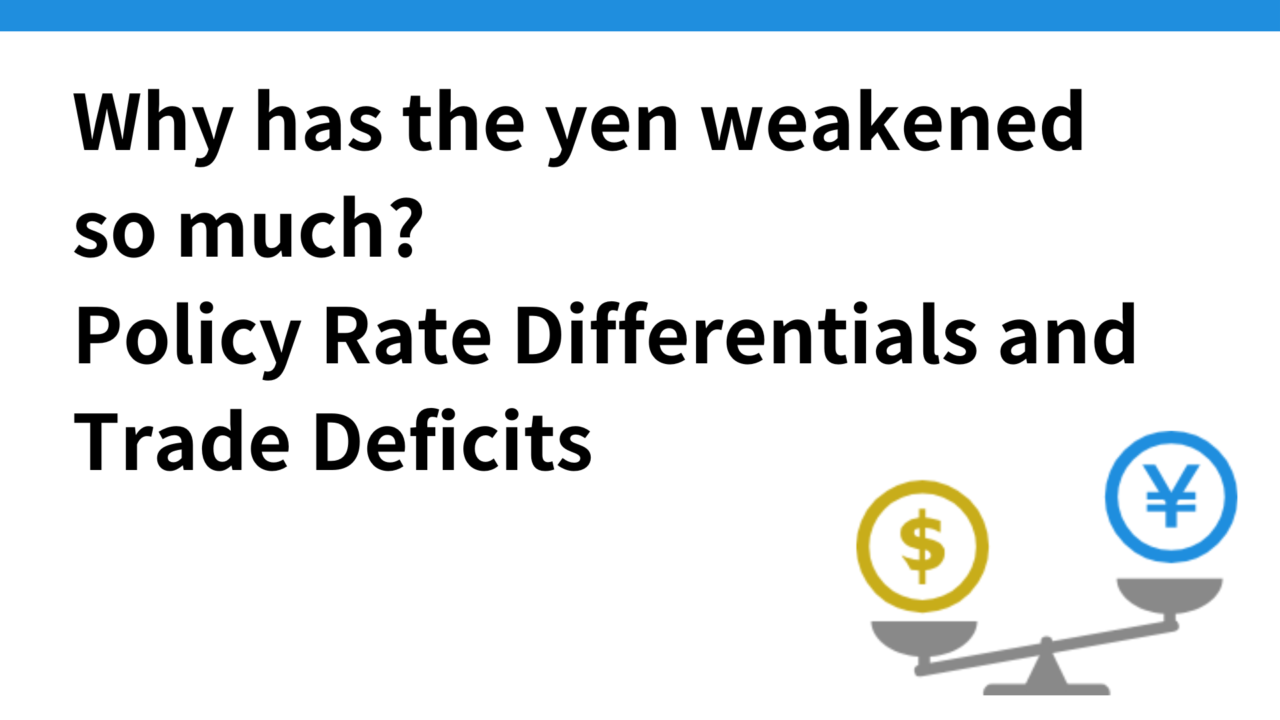

コメント